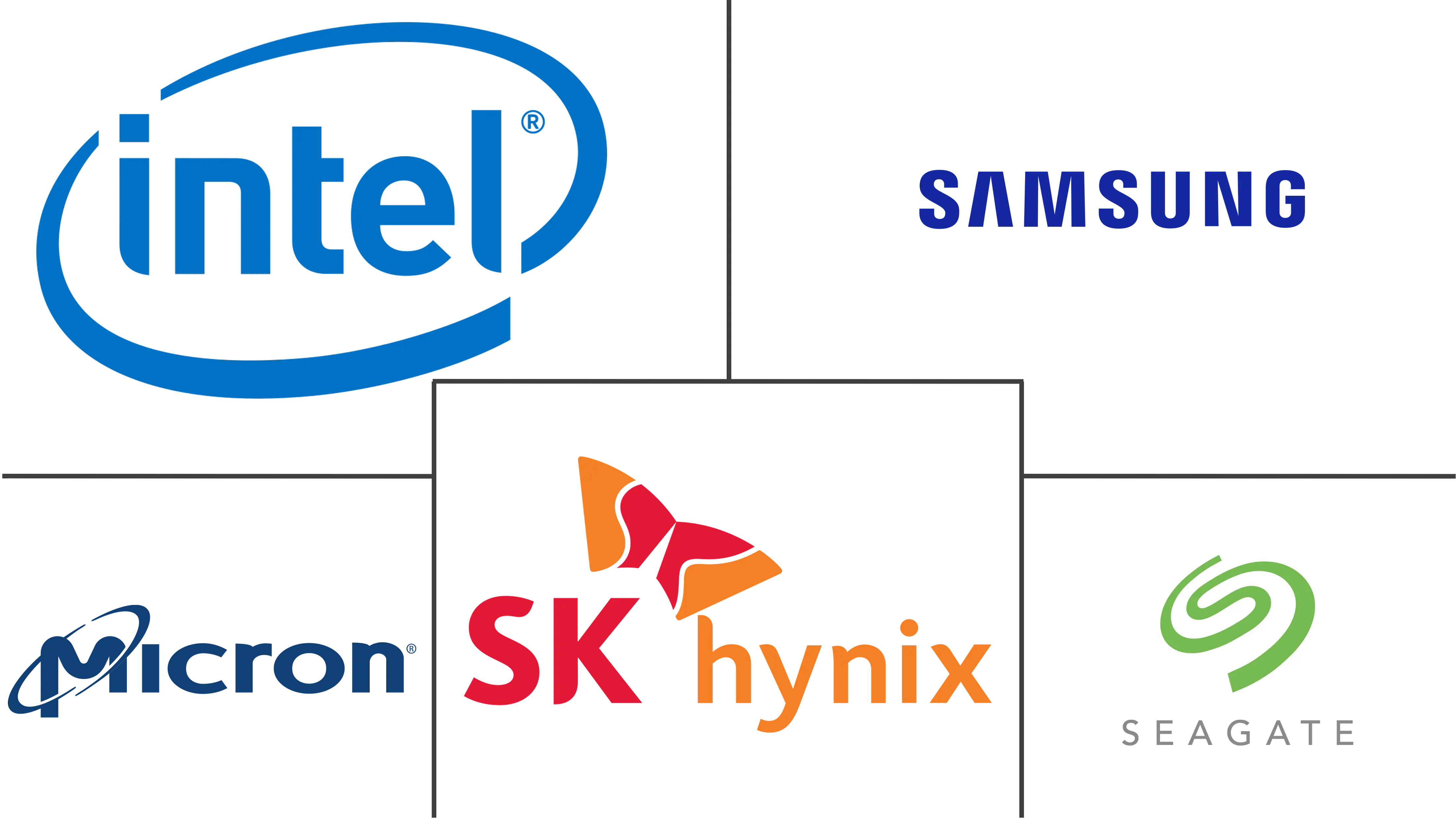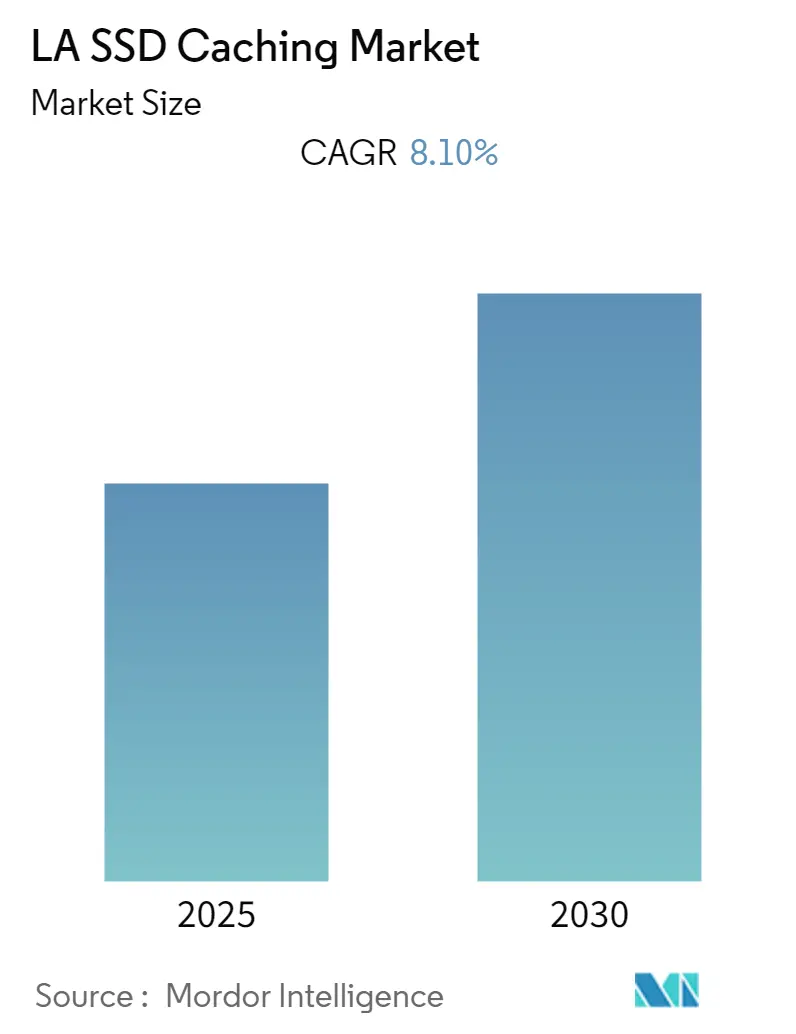
LA SSD Caching Market Analysis by Mordor Intelligence
The LA SSD Caching Market is expected to register a CAGR of 8.1% during the forecast period.
- SSD caching, first introduced by Intel as a smart response technology, provides improved performance for computers that use traditional hard drives. The technology reduces the cost and time to run an application as SSDs are faster. These benefits are now being realized by IT professionals, and they are looking for various ways to take advantage of SSD caching techniques. SSD caching requires a combination of SSD drive and supporting software to perform the required functioning.
- Latin America is a very lucrative market because the size of the economy is increasing in those countries. This increasing economy has had an effect on the disposable income of the people. This has helped industries like laptops and tablets, which have a greater demand now in this region. Tablets are being used in schools also in some countries. All this has helped the SSD market because of the increase in the usage of laptops and tablets. According to the World Bank Data, Latin countries like the Bahamas, Puerto Rico, St. Kitts, Nevis, Uruguay, Trinidad and Tobago, Barbados, Antigua and Barbuda, Chile, Panama, Costa Rica have higher GDP per capita than the world average that is around USD 10,000.
- SSD drives are costly; hence a combination of them needs to be used with traditional hard drives to enhance performance efficiency. The market is still growing, and many enterprises are deploying these solutions to cut down costs and improve efficiency.
- These enterprises are required to analyze huge data sets coming from various data sources. SSD solutions make the task easier without investing too much in high-powered drives and solutions.
- The outbreak of COVID-19 has a significant effect on the market. The raw materials supply is affected, hence the value chain is disrupted, causing an inflationary risk on products. The supply chain gap is projected to narrow as the electronics supply chains in China and South Korea begin to recover, notwithstanding a drop in COVID-19 cases. The coronavirus outbreak had an impact on SSD suppliers with factories, third-party assemblers, or source materials in Wuhan. Due to the tardy return of laborers amidst the virus-based limitations, the industries were running at low utilization.
LA SSD Caching Market Trends and Insights
Enterprise Storage Expected to Hold Major Share
- Servers are typically configured with banks of hard disc drives (HDD) or connected to storage area networks (SANs), which are large banks of hard drives themselves. In the business storage network, improvements in server technology caused an I/O performance gap. SSD-based caching is used to close the I/O performance gap by lowering I/O latency and enhancing IOPS performance. Server-based caching does not necessitate storage array upgrades or the installation of any other appliances in the data path of important networks. SSD caching in servers effectively reduces the requirement for storage networks and arrays by servicing large percentages of the I/O demand of important servers at the network edge. This decrease in demand improves storage performance for other associated servers, potentially extending the storage infrastructure's useful life.
- SSD caching is used in a corporate environment to store previously requested data as it passes through the network, allowing it to be retrieved fast when needed. Placing previously requested material in temporary storage lessens the demand on an enterprise's bandwidth and speeds up access to the most up-to-date information. Enterprise SSDs either store data permanently or momentarily cache data in nonvolatile semiconductor memory. NAND flash memory is used in these SSDs, which provide better performance and use less power than spinning HDDs. SSD caching is becoming more important as the demand for computing speed rises across a variety of industries. As a result, a number of companies have entered the SSD cache market. This resulted in a decrease in the cost of SSD caches.
- Currently, data-center applications in a variety of businesses are processing an expanding volume of data sets. The page cache's caching impact is hampered by its low capacity. In comparison to hard discs and DRAM, emerging flash-based SSDs provide lower latency and lower costs. As a result, SSD-based caching is commonly used in data centers. According to the worldwide cloud index, data center traffic has seen an increase in data storage requirements. Because of its high-performance features, the high-traffic data center will increase demand for SSD caching. SSD caching allows data centers and cloud computing environments to host more users and complete more transactions per second by accelerating input/output operations per second (IOPs) and reducing latency.
- The market for SSDs in Latin America has been driven by increasing IoT penetration and a jump in demand for data storage in businesses. Furthermore, as SSD costs have decreased, the use of SSDs in staff computers and laptops has increased, contributing to an increase in demand for SSD drives in the region. Large corporations are establishing data centers in Mexico and Brazil, which will fuel the SSD market over the projection period.
- Equinix, for example, joined the Mexican data center market in January 2020, spending over USD 185 million to acquire three Axtel data centers. Some of the biggest data center colocation providers in Mexico are IPXON Networks, Nabiax, Servers Data Center Services, Digital Realty (Ascenty), KIO Networks, and Equinix (Axtel). Along with Mexico, Huawei Technologies maintains a cloud region in Mexico, with data centers serving Central America, the Caribbean, Colombia, and Ecuador. Similarly, Arizton has identified around 43 unique data center facilities in Brazil, as well as ten upcoming facilities. The Brazilian government has reached an agreement with the United Kingdom government to speed up the digitalization and innovation in public service delivery in the Brazilian data center industry.
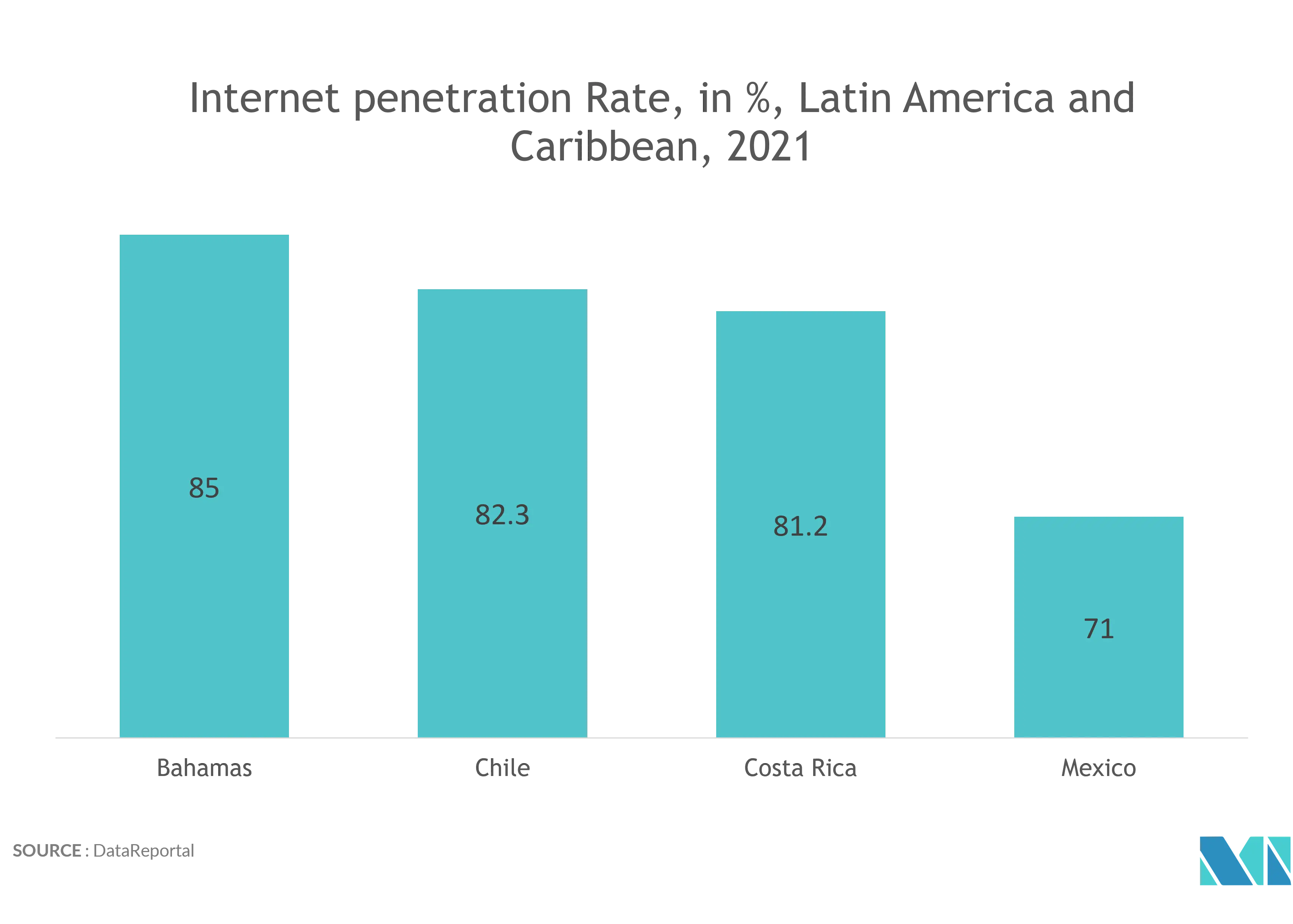
Cloud Storage to Drive the market
- Cloud platforms enabled new, complex business models and have been orchestrating more global-based integration networks in recent years. The deployment of storage solutions over the cloud offers greater convenience, as the service vendor is solely responsible for providing maximum uptime, data security, and periodic updates, thus, decreasing the total cost of ownership.
- The need to reduce latency by moving data closer to the customer, as well as governmental and business regulations for data to be kept locally within different areas, are projected to drive growth in cloud storage in the United States. Enterprises in the region that are installing complex cloud infrastructures want systems that can store, retrieve, process, and analyze large amounts of business-critical data fast. As a result of this demand, many firms in the United States are switching from SATA-based SSDs to NVMe-based SSDs for primary storage. The latest NVMe SSDs include caching capabilities. The data center sector is rapidly expanding, with a greater emphasis on efficiency and maximum uptime. For example, IBM Corporation built four new cloud data centers in the country in response to increased demand for cognitive capabilities in the country.
- In addition, the cloud acts as a catalyst for IT transformation, providing the flexibility to combine the preferred clouds and existing on-premises infrastructure in the ratio best suited for the workload.
- Furthermore, the rising focus on cost optimization and business agility has led to the expansion of cloud data centers. Also, cloud services adapt easily to the changing landscape to meet new requirements. This allows the client organization to focus on their core competency, which, in turn, results in their overall growth.
- With the unstructured data expanding by more than 50% annually, managed service providers are looking at cloud storage as an upfront revenue opportunity. This was further augmented by the greater need for storage control. The foray of advanced technologies prompts companies to emphasize updating their storage system to match with the competition. Hybrid cloud is one such trend that provides a significant boost to market growth. However, security and the lack of network bandwidth for data transfer can challenge the growth of the market.
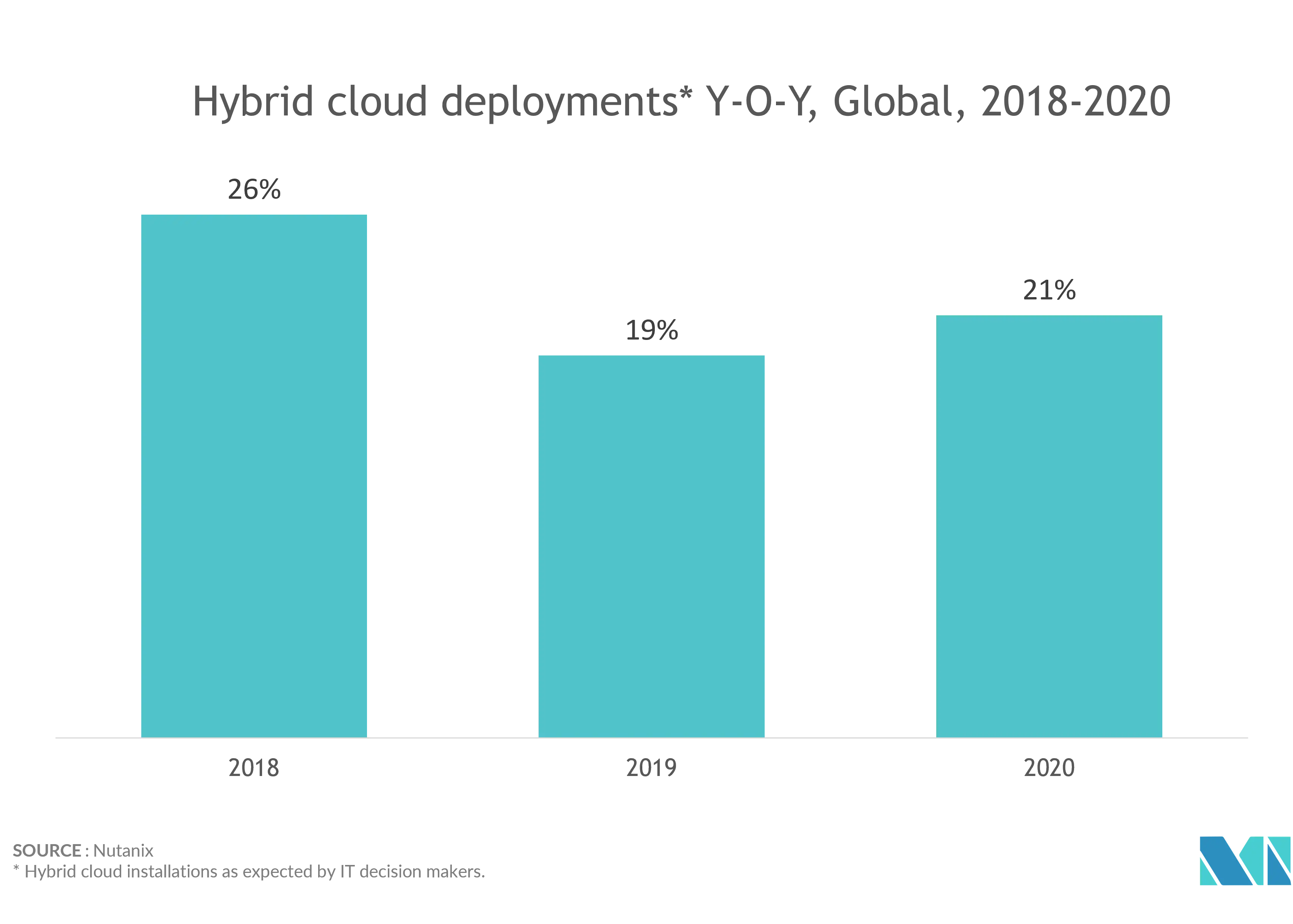
Competitive Landscape
The SSD Caching Market in Latin America is majorly concentrated, with technology behemoths exerting supremacy thanks to cutting-edge technology and experience. To be competitive, businesses introduce new items with innovations and advancements on a regular basis. Acquisitions, partnerships, investments, mergers, and technological advances, and introductions are all used by major industry actors to stay competitive.
- May 2020 - Samsung developed a new SSD with support for the latest PCIe Gen. 4 standard and an E1.S form factor. The company's new PM9A3 SSD uses Samsung's sixth-generation 3-bit V-NAND technology and will be available in three form factors: E1.S, M.2, and U.2. The E1.S and U.2 versions of the SSD can reach peak sequential read and write speeds of up to 6,500 MB/s and 3,500 MB/s, respectively.
- May 2020 - The Intel Corporation has revealed that a 144-layer 3D NAND QLC SSD will be available later this year. The Alder Stream Optane SSD will be available in a single port configuration this year and a dual-port configuration in 2021, according to Intel. Alder Stream employs second-generation 3D XPoint media, which has four layers as opposed to two in the first version. It features a new controller ASIC with the most up-to-date software and PCIe 4 link technology.
LA SSD Caching Industry Leaders
Intel Corporation
Samsung Electronics Co. Ltd
Micron technology Inc
SK Hynix Inc.
Seagate Technology LLC
- *Disclaimer: Major Players sorted in no particular order
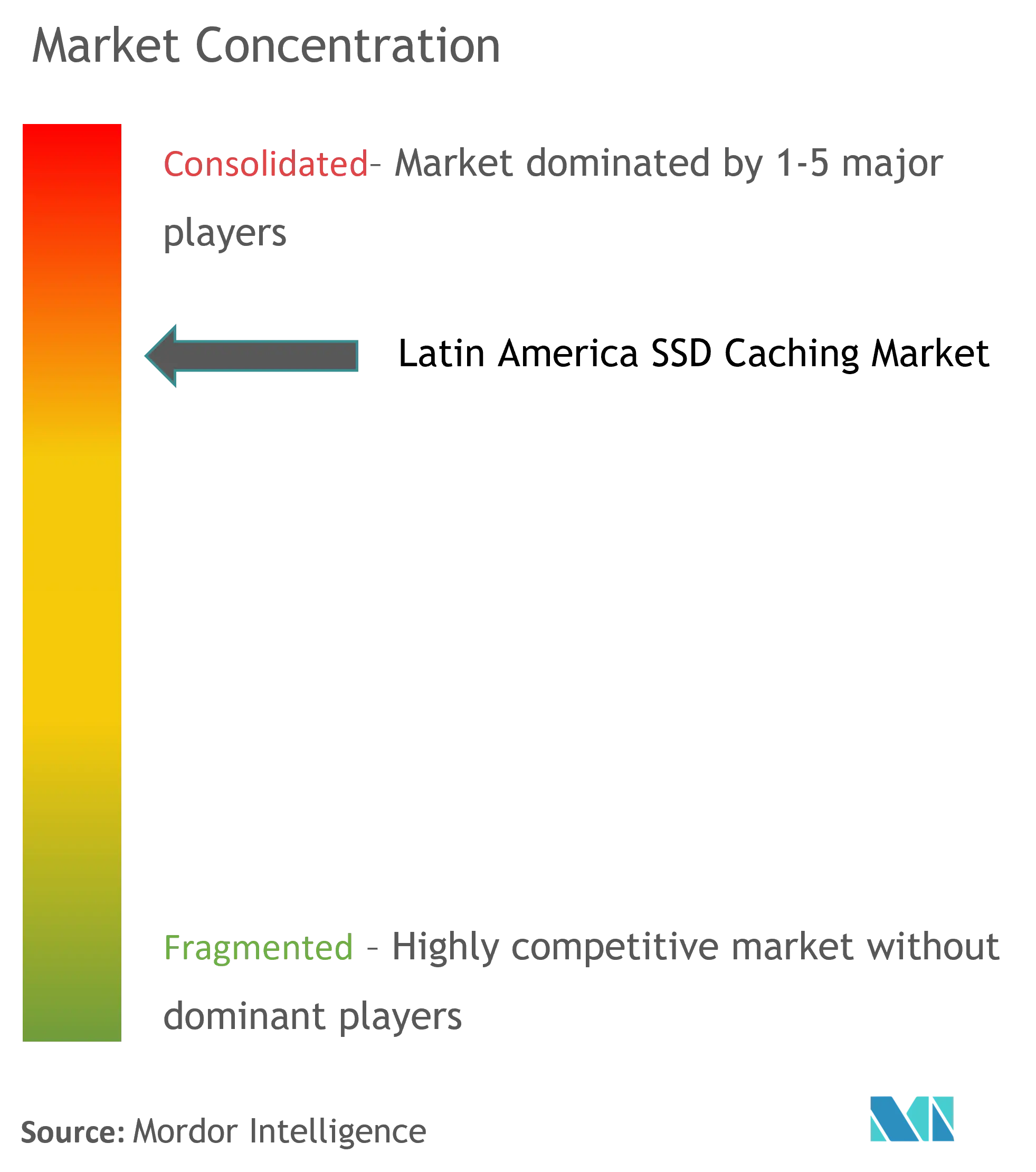
Recent Industry Developments
- March 2021 - A Solid State Drive (SSD) 670p has been released by Intel. The client SSD is a 144-layer quad-level cell-based device. The SSD can hold up to two terabytes of data in a single drive. According to Intel, SSDs can be used to supplement everyday computing needs as well as to assist extreme gaming. When compared to the previous generation Intel QLC 3D NAND SSD, the new SSD 670p is said to give improved performance, including a 2-times sequential read and a 20% endurance boost. To meet normal processing demands, the Intel SSD 670p has been optimized for low queue depth and mixed workloads.
- August 2020 - Intel launched SSD D7-P550/5600. The Intel" SSD D7-P5500 and Intel" SSD D7-P5600 Series is designed to improve IT efficiency and data security by providing optimum performance and capacity for all-TLC arrays. The Intel" SSD D7-P5500 and D7-P5600 include an all-new Intel PCle Gen4 controller and firmware that provides low latency, better administration capabilities, scalability, and crucial new NVMe features for Enterprise and Cloud settings.
LA SSD Caching Market Report Scope
SSD caching, also known as flash caching, is the temporary storage of data on NAND flash memory chips in a solid-state drive (SSD) to allow for faster response to data requests. In an enterprise IT setting, the purpose of SSD read caching is to store previously requested data as it passes through the network so that it can be retrieved rapidly when needed. Placing previously requested information in temporary storage or cache decreases bandwidth usage and speeds up access to the most active data. Caching data on SSDs can potentially be a more cost-effective option than storing data on top-tier flash storage. SSD write caching's goal is to hold data briefly until slower persistent storage media has enough resources to complete the writing process.
Latin America SSD Caching market is segmented by Application (Enterprise Storage, Personal Storage).
| Enterprise Storage |
| Personal Storage |
| Application | Enterprise Storage |
| Personal Storage |
Key Questions Answered in the Report
What is the current LA SSD Caching Market size?
The LA SSD Caching Market is projected to register a CAGR of 8.1% during the forecast period (2025-2030)
Who are the key players in LA SSD Caching Market?
Intel Corporation, Samsung Electronics Co. Ltd, Micron technology Inc, SK Hynix Inc. and Seagate Technology LLC are the major companies operating in the LA SSD Caching Market.
What years does this LA SSD Caching Market cover?
The report covers the LA SSD Caching Market historical market size for years: 2019, 2020, 2021, 2022, 2023 and 2024. The report also forecasts the LA SSD Caching Market size for years: 2025, 2026, 2027, 2028, 2029 and 2030.
Page last updated on:
LA SSD Caching Market Report
Statistics for the 2025 LA SSD Caching market share, size and revenue growth rate, created by Mordor Intelligence™ Industry Reports. LA SSD Caching analysis includes a market forecast outlook for 2025 to 2030 and historical overview. Get a sample of this industry analysis as a free report PDF download.
